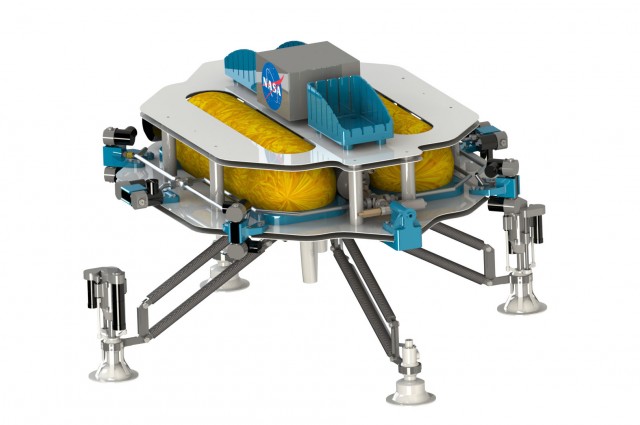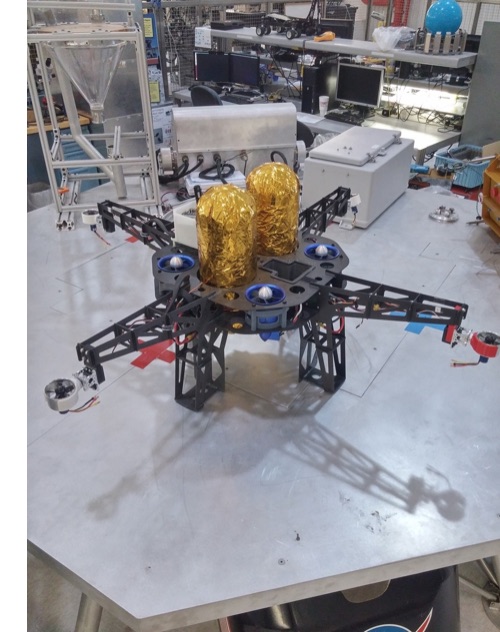Education
- The First Super Moon Eclipse In 32 Years Happens This Sunday
As you gaze toward the sky on Sunday night, the cooling fall air around you, perhaps a few leaves crunching beneath your feet, and--WAIT the moon is giant and red. Don't worry, it's not a sign of the end times. You're witnessing a rare and...
- Diagnosing Gonorrhoea
The only way to find out if you have gonorrhoea is to be tested. If you suspect that you have it or any other sexually transmitted infection (STI), it's important not to delay getting tested. ...
- New Horizons Reveals More Mountains In Pluto's Heart
The frozen peaks were found on the lower-left edge of the dwarf world's "heart" and are 1-1.5km-high.They sit between a patch of icy, flat terrain, called Sputnik Planum, which scientists believe is less than 100 million years old, and a dark area...
- Is Engineering A Great Career?
"Scientists investigate that which already is, Engineers create that which has never been." - Albert Einstein, Physicist."Scientists dream about doing great things. Engineers do them." Before persuing any potential career path, it is important for...
- What Would Happen To Average Temperature If There Was No Atmosphere In The Earth?
The atmosphere is an insulating blanket protecting the Earth.It softens the intense light and heat of the sun.It protects us from the harmful ultraviolet rays of the sun.The greenhouse gases in the atmosphere trap the outgoing radiation from the earth's...
Education
NASA Is Developing Flying Drones To Explore Distant Worlds
We have drones that fight in wars, drones to combat rhino poaching, and now a team of engineers are developing drones that could be used to explore the surface of Mars, the Moon, or even an asteroid. In development at NASA’s experimental Swamp Works laboratory, the drones would use cold-gas jets to propel themselves as they scout the surfaces for valuable resources or potential sites for a permanent base.

“This is a prospecting robot,” said Rob Mueller, senior technologist at Swamp Works. “The first step in being able to use resources on Mars or an asteroid is to find out where the resources are. They are most likely in hard-to-access areas where there is permanent shadow. Some of the crater walls are angled 30 degrees or more, and that's far too steep for a traditional rover to navigate and climb.”
 The logic is that ice and water are most likely to persist in the shadowy parts of celestial bodies, such as craters, which the drones could explore. Called “Extreme Access Flyers,” the researchers hope to use them to fly into hard-to-reach areas, dig out and collect up to seven grams (0.25 ounces) of soil, and then fly back to a base where it could recharge and analyze the samples. They’re even planning on designing the drone to run off fuel made from resources found on the distant worlds – such as oxygen or water vapor – meaning that the robot could potentially make hundreds of exploration flights.
The logic is that ice and water are most likely to persist in the shadowy parts of celestial bodies, such as craters, which the drones could explore. Called “Extreme Access Flyers,” the researchers hope to use them to fly into hard-to-reach areas, dig out and collect up to seven grams (0.25 ounces) of soil, and then fly back to a base where it could recharge and analyze the samples. They’re even planning on designing the drone to run off fuel made from resources found on the distant worlds – such as oxygen or water vapor – meaning that the robot could potentially make hundreds of exploration flights.
Due to the thin air on Mars, and none on the Moon or asteroids, the researchers had to ditch the possibility of using rotors, which is why they settled on the cold-gas jets. The robot would also have to operate autonomously, deciding by itself where to explore and what to sample, because with no GPS to help it navigate and a delay in communications to Earth, controlling it remotely in real-time would not be possible.
The team has produced a prototype drone about 1.5 meters (five feet) across that uses ducted fans, and they have run a few preliminary tests with it on the Shuttle Landing Facility’s runway. In addition to this, they’ve also made another drone that was created with asteroid exploration in mind. Using a gimbal device to simulate zero gravity, the robot was able to show how it would maneuver in such conditions, using “nitrogen high pressure cold gas thrusters,” while the team watched how it behaved in a simulated virtual world.
But these developments won’t only be useful on other planets. The technology that the team are developing, to be able to fly a drone to an inaccessible region and collect samples, could have uses here on Earth. For example, Mueller envisages a situation where the robot could be used to measure the effect of nuclear radiation when risking a human's life to gather samples might be too great.

“This is a prospecting robot,” said Rob Mueller, senior technologist at Swamp Works. “The first step in being able to use resources on Mars or an asteroid is to find out where the resources are. They are most likely in hard-to-access areas where there is permanent shadow. Some of the crater walls are angled 30 degrees or more, and that's far too steep for a traditional rover to navigate and climb.”
 The logic is that ice and water are most likely to persist in the shadowy parts of celestial bodies, such as craters, which the drones could explore. Called “Extreme Access Flyers,” the researchers hope to use them to fly into hard-to-reach areas, dig out and collect up to seven grams (0.25 ounces) of soil, and then fly back to a base where it could recharge and analyze the samples. They’re even planning on designing the drone to run off fuel made from resources found on the distant worlds – such as oxygen or water vapor – meaning that the robot could potentially make hundreds of exploration flights.
The logic is that ice and water are most likely to persist in the shadowy parts of celestial bodies, such as craters, which the drones could explore. Called “Extreme Access Flyers,” the researchers hope to use them to fly into hard-to-reach areas, dig out and collect up to seven grams (0.25 ounces) of soil, and then fly back to a base where it could recharge and analyze the samples. They’re even planning on designing the drone to run off fuel made from resources found on the distant worlds – such as oxygen or water vapor – meaning that the robot could potentially make hundreds of exploration flights.Due to the thin air on Mars, and none on the Moon or asteroids, the researchers had to ditch the possibility of using rotors, which is why they settled on the cold-gas jets. The robot would also have to operate autonomously, deciding by itself where to explore and what to sample, because with no GPS to help it navigate and a delay in communications to Earth, controlling it remotely in real-time would not be possible.
The team has produced a prototype drone about 1.5 meters (five feet) across that uses ducted fans, and they have run a few preliminary tests with it on the Shuttle Landing Facility’s runway. In addition to this, they’ve also made another drone that was created with asteroid exploration in mind. Using a gimbal device to simulate zero gravity, the robot was able to show how it would maneuver in such conditions, using “nitrogen high pressure cold gas thrusters,” while the team watched how it behaved in a simulated virtual world.
But these developments won’t only be useful on other planets. The technology that the team are developing, to be able to fly a drone to an inaccessible region and collect samples, could have uses here on Earth. For example, Mueller envisages a situation where the robot could be used to measure the effect of nuclear radiation when risking a human's life to gather samples might be too great.
- The First Super Moon Eclipse In 32 Years Happens This Sunday
As you gaze toward the sky on Sunday night, the cooling fall air around you, perhaps a few leaves crunching beneath your feet, and--WAIT the moon is giant and red. Don't worry, it's not a sign of the end times. You're witnessing a rare and...
- Diagnosing Gonorrhoea
The only way to find out if you have gonorrhoea is to be tested. If you suspect that you have it or any other sexually transmitted infection (STI), it's important not to delay getting tested. ...
- New Horizons Reveals More Mountains In Pluto's Heart
The frozen peaks were found on the lower-left edge of the dwarf world's "heart" and are 1-1.5km-high.They sit between a patch of icy, flat terrain, called Sputnik Planum, which scientists believe is less than 100 million years old, and a dark area...
- Is Engineering A Great Career?
"Scientists investigate that which already is, Engineers create that which has never been." - Albert Einstein, Physicist."Scientists dream about doing great things. Engineers do them." Before persuing any potential career path, it is important for...
- What Would Happen To Average Temperature If There Was No Atmosphere In The Earth?
The atmosphere is an insulating blanket protecting the Earth.It softens the intense light and heat of the sun.It protects us from the harmful ultraviolet rays of the sun.The greenhouse gases in the atmosphere trap the outgoing radiation from the earth's...
